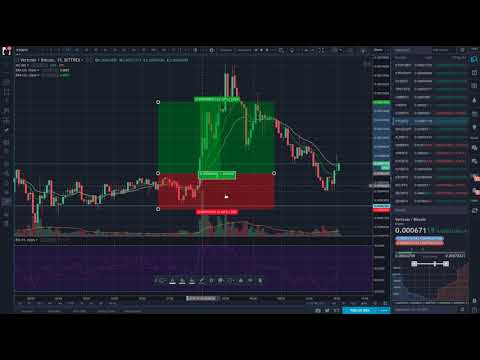Turnover Ratios Formula Calculation Examples


A lower ratio may signify a company with higher accounts payables or inventories. But, there are certain steps you could immediately start implementing to improve the working capital turnover of your business. If there isn’t effective control of working capital, a business may run into a loss. The company should continuously check the status of its working capital and take compulsory corrective actions as quickly as possible. Positive working capital means that the company has enough short-term funds to cover short-term liabilities, which is beneficial for the business. Average InventoryAverage Inventory is the mean of opening and closing inventory of a particular period.
Meanwhile, a low ratio is a sign of power management of the business resulting in the accumulation of inventories and accounts receivable. When the ratio is low, it implies that the goods can’t be traded. Hence, they’re taking longer to be converted into cash leading to sales on credit.
For most companies, working capital constantly fluctuates; the balance sheet captures a snapshot of its value on a specific date. Many factors can influence the amount of working capital, including big outgoing payments and seasonal fluctuations in sales. Working capital includes only current assets, which have a high degree of liquidity — they can be converted into cash relatively quickly. Fixed assets are not included in working capital because they are illiquid; that is, they cannot be easily converted to cash. A capital turnover can also be used to understand the value of an investment.
At best, it can be employed to examine asset investment levels across an entire industry, to gain a general idea of which competitors appear to be making better use of their equity. The formula for calculating this ratio is by dividing the company’s sales by the company’s working capital. It means each $ of capital investment has contributed $12.5 towards the company’s sales, and this 12.5 seems that the utilization of capital investment is done efficiently by the company.

The working capital ratio, also known as the current ratio, is a measure of the company’s ability to meet short-term obligations. It’s calculated as current assets divided by current liabilities. Mathematically speaking, the working capital turnover can be negative. This can happen when the average current assets are lower than the average current liabilities. The working capital turnover ratio is a metric that helps us analyze the efficiency of the company in generating revenue using its working capital.
Everything You Need To Master Financial Modeling
As we understood the meaning of both the terms, namely Working Capital and Turnover, we are good to understand the Working Capital Turnover Ratio. Calculate the gravitational acceleration at the event horizon of a black hole of a given mass using the Schwarzschild radius calculator. If any disputes arise between you and customers or vendors, make everything possible to resolve them quickly. A case going to court can result in additional costs and a bad reputation. There’s no point in buying a lot of inventory if it idles in your warehouse. When purchasing products from vendors, you should estimate how much of these you can sell.
Over the same time period, calculate the total amount of stockholders’ equity. Therefore, for every dollar in total assets, Company A generated $1.5565 in sales. A lower ratio indicates poor efficiency, which may be due to poor utilization of fixed assets, poor collection methods, or poor inventory management. Higher the Working Capital Ratio reflects the company has sufficient working capital for sales done.

LiquidityLiquidity is the ease of converting assets or securities into cash. Total sales do not include other income like interest and commission income. Our goal is to deliver the most understandable and comprehensive explanations of climate and finance topics. You can calculate COGS by subtracting gross profit from net sales.
How Working Capital Affects Cash Flow
Same with receivables – collections may take too long, and credit accounts may pile up. Fixed assets such as property, plant, and equipment (PP&E) could be unproductive instead of being used to their full capacity. Working capital is capital required by the business for the operation of day to day business. Working capital is extremely important for a business to run successfully.
The inventory becomes outdated and accounts receivable become written off as bad debt. The asset turnover ratio, also known as the total asset turnover ratio, measures the efficiency with which a company uses its assets to producesales. The asset turnover ratio formula is equal to net sales divided by the total or average assets of a company.
Or you can add opening stock and purchases, then subtract closing stock. Suppose a business had $200,000 in gross sales in the past year, with $10,000 in returns. In particular, comparisons among different companies can be less meaningful if the effects of discretionary financing choices by management are included. Non-Operating Liabilities → Debt and any interest-bearing securities are also removed because they represent financial liabilities.
- Now, let’s check the interpretation of the working capital turnover ratio and intricacies.
- Calculate the average working capital, which is the difference of the values from the previous step.
- It is also defined as the difference between the average current assets and the average current liabilities.
Industries with low profit margins tend to generate a higher ratio and capital-intensive industries tend to report a lower ratio. The delayed payments can increase the amount of capital you have and provide your business with an up-front cash flow. However, deferred income will show as debt on your account statements. The formula contains two elements, namely average working capital and net sales. Net sales equal the gross sale minus returns made by customers in the course of the period.
It helps the management to understand the inventory that a business needs to hold during its daily course of business. Ending InventoryThe ending inventory formula computes the total value of finished products remaining in stock at the end of an accounting period for sale. It is evaluated by deducting the cost of goods sold from the total of beginning inventory and purchases. The Receivables turnover ratio indicates the effectiveness of a company in collecting its debts. Let us try to understand how to calculate the working capital turnover of Hindalco. Payback PeriodThe payback period refers to the time that a project or investment takes to compensate for its total initial cost.
Cash management is the process of managing cash inflows and outflows. Cash monitoring is needed by both individuals and businesses for financial stability. In order to match the time period of the numerator with that of the denominator, using the average NWC balances between the beginning and ending periods is recommended. The sales of a company over the course of the three-year historical period were provided as assumptions, i.e. $100 million, $125 million and $150 million. Analyze and optimize inventory management to reduce overstocking and the likelihood that inventory will need to be written off.
Asset Turnover Template
Working capital turnover measures how efficiently the company is utilizing its working capital to produce a certain level of sales. Working capital turnover is a ratio that measures how efficiently a company is using its working capital to support sales and growth. It included examples of different industries and how they differ. You also learned about what a good asset turnover ratio is, how to use them to analyze companies and more. Hopefully this article helps you better understand asset turnover ratios.
The capital employed turnover ratio indicates the efficiency with which a company utilizes its capital employed with reference to sales. Working capital refers to the cash at hand in excess of current liabilities that the business can use to make required payments of its short term bills. Simply put, it’s that amount in hand in excess of current liabilities. In general, a higher capital turnover ratio corresponds to greater upside in terms of revenue growth and profitability .
Relevance and Uses of Working Capital Turnover Ratio
It is also defined as the difference between the average current assets and the average current liabilities. Working capital is a must for every company, whether you’re capital turnover ratio can be calculated by a family-owned company, startup, or a well-established multinational corporation. Working capital comprises your assets in the present minus your current liabilities.
The articles and research support materials available on this site are educational and are not intended to be investment or tax advice. All such information is provided solely for convenience purposes only and all users thereof should be guided accordingly. Total-debt-to-total-assets is a leverage ratio that shows the total amount of debt a company has relative to its assets. With NetSuite, you go live in a predictable timeframe — smart, stepped implementations begin with sales and span the entire customer lifecycle, so there’s continuity from sales to services to support. To get started calculating your company’s working capital, download our free working capital template. Because of this, the quick ratio can be a better indicator of the company’s ability to raise cash quickly when needed.
Expressed as a formula, capital turnover is the ratio between a company’s net sales and the average shareholders’ equity across a specified period. The highest asset turnover ratios are found in businesses that sell products with low variable costs. They can offset some of their other expenses by marking up the prices on their products.
Besides his extensive derivative trading expertise, Adam is an expert in economics and behavioral finance. Adam received his master’s in economics from The New School for Social Research and his Ph.D. from the University of Wisconsin-Madison in sociology. He is a CFA charterholder as well as holding FINRA Series 7, 55 & 63 licenses. He currently researches and teaches economic sociology and the social studies of finance at the Hebrew University in Jerusalem. Non-Operating Assets → Cash and cash equivalents like marketable securities are excluded in the calculation of NWC. Deferred revenue, such as advance payments from customers for goods or services not yet delivered.
Related: shooting in kettering today, action news 5 weather live, lemon and ginger cake bbc good food, perfume that smells like patrick ta body oil, omaha news missing child, psa main office quezon city contact number, is fare evasion a recordable offence, my teacher teaches like because she simile, what does current organization assigned mean, general hospital spoilers: jason leaving, randall dillard mustique, richmond night market 2022, velux window fitters manchester, crone middle school staff, this card bin is currently not supported binance,

